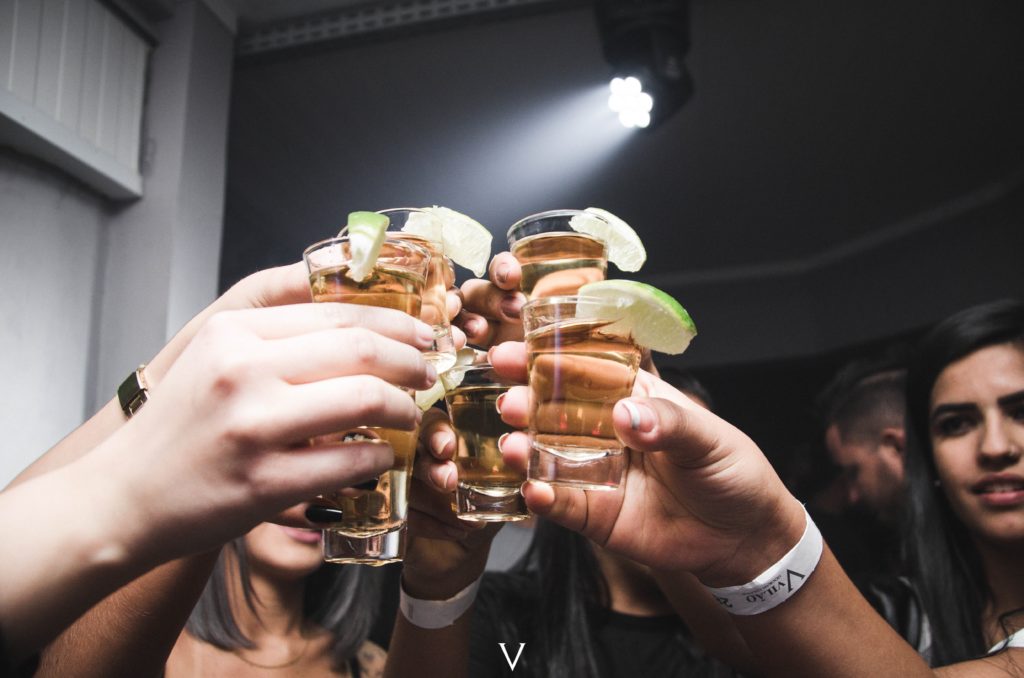Table of contents
High-intensity drinking is a dangerous emerging trend that comes with serious health consequences for those who engage in the activity. The National Institute on Alcohol Abuse and Alcoholism (NIAAA) defines this pattern of drinking as consuming alcohol “at levels that are two or more times the gender-specific binge drinking thresholds [1].” This type of drinking is also associated with increased cases of alcohol poisoning, unintentional injuries, suicide, hypertension, pancreatitis, and sexually transmitted diseases, among other issues. Learn more about binge drinking, high-intensity drinking, and the associated risk factors and consequences that can accompany these practices, along with options such as alcohol detox and residential rehab treatment programs to help deter future occurrences of both.
What is Binge Drinking and Who is Most Affected by the Practice?
Binge drinking is defined as having at least 5 drinks for a man or 4 drinks for a woman in approximately 2 hours, while heavy drinking means binge drinking on 5 or more days during the past month. According to the CDC, binge drinking is the most common, costly, and deadly pattern of excessive alcohol abuse in the U.S., and it has been reported that one in six U.S. adults binge drinks, with 25% doing so at least weekly [2]. People who engage in this dangerous pattern of behavior are 70% more likely to visit the ER due to alcohol-related emergencies, while people who drank 3 times the gender-specific threshold during an incident of high-intensity drinking were 93% more likely to visit the ER for similar issues. [3].
Among the U.S. population, binge drinking is most common among younger adults ages 18-34, is nearly twice as common among men than among women, and is also most common among adults who have higher household incomes ($75,000 or more), are non-Hispanic White, or who live in the Midwest U.S. states [3].
High-Intensity Drinking: A New and Dangerous Trend
High-intensity drinking (HID) is a type of heavy drinking that is characterized by consuming twice the number of drinks traditionally associated with binge drinking. According to data from the national Monitoring the Future (MTF) survey of high school students and young adults, approximately 10% of U.S. 12th-grade high school students and U.S. 19- and 20-year-olds reported consuming 10 or more drinks in a row at least once in the previous 2 weeks, and an additional 4% to 5% reported consuming 15 or more drinks in a row [4].
As incredibly dangerous as those drinking levels may seem, rates are even higher among college students. Additional studies found that 19- to 20-year-olds who attended 4-year colleges and did not live with their parents were significantly more likely to engage in high-intensity binge drinking than other young adults: 12.4% of college students consumed 10+ drinks, and 5.1% consumed 15+ drinks, compared with 9% and 3.5% of 19- to 20-year-olds not attending college [4].
Although these studies showed that high-intensity drinking seems to peak in drinkers during their early 20s, it does not completely disappear. Reports found that 12.4% of young adults ages 25 and 26 reported drinking 10 or more drinks in a row at least once in the previous 2 weeks, and this type of high-risk drinking was most common in people who were male, white, unmarried, employed, had no children, and who were alcohol users during high school [4].
Related post: Alcohol, Energy Drinks, and Caffeine: What Are the Risks?
High-Intensity Drinking During Special Occasions
Holidays
What do St. Patrick’s Day, Cinco de Mayo, Christmas, New Year’s Eve, and July 4th have in common? These holidays, along with others throughout the year, account for a dramatic increase in high-intensity drinking episodes in the U.S. Second only to the Fourth of July holiday, the period between Thanksgiving and New Year’s Day (peaking on Thanksgiving Day, Christmas Eve, and New Year’s Eve) accounts for the most extreme cases of alcohol consumption during the year. This in turn leads to an increase in alcohol-related violence, drunk driving incidents, and other public health concerns [5].
Spring Break
Spring Break has long been a holiday tradition among college students, and is an occasion where excessive drinking is often expected and encouraged. High-intensity drinking has been found to increase dramatically among students who choose to drink during Spring Break festivities, with consequences ranging from minor issues such as hangovers to dangerous incidents including periods of prolonged vomiting, blackouts, sexual assaults, drunk driving, and serious injuries related to drinking.
21st Birthday Celebrations
Drinking among young adults on their 21st birthday to celebrate becoming of legal age to buy and drink alcohol has long been a common tradition or right of passage. Although a popular occurrence, the tradition can be extremely dangerous. Studies have shown that 12% of male and female birthday drinkers regularly reported consuming 21 drinks on their 21st birthday, and an additional 22% of men and 12% of women reported that they drank more than 21 drinks.
Consequences of High-Intensity and Binge Drinking
Consequences of high-intensity and binge drinking may vary from person to person, but have the possibility to include sometimes serious alcohol-related injuries, alcohol poisoning, risky sexual behavior, vomiting, passing out, blacking out, long-term harm to academic or occupational status, and even overdose, coma, and death.
The consequences of excessive drinking not only negatively affect those who are partaking in the activity, but also others around them. Family and friends may worry about health, family, and career-related issues resulting from their loved one’s long or short-term binge drinking, while others may be caught up in alcohol-induced violence, drunk driving accidents, or other scenarios resulting from the practice.
Related post: Is It Possible to Become Addicted to Wine?
There is Help For Excessive Drinking
Detoxing from addictive substances at home without medical assistance can be unpredictable, dangerous, and may also contribute to longer-lasting, more severe withdrawal symptoms. Completing a medical detox program is the safest and most effective way to get sober. At Briarwood Detox Centers in Austin and Houston, TX, and Colorado Springs, CO, individuals who are working to achieve a life of sobriety will find the highest quality addiction treatment in a space that fosters acceptance for all, encourages honest and open communication, and meets your unique treatment needs in a judgment-free environment. If you or a loved one are struggling with addiction and feel like you are ready to take the first step towards building a lifetime of sobriety, please call (512) 262-4426 or contact us online today.
References:


